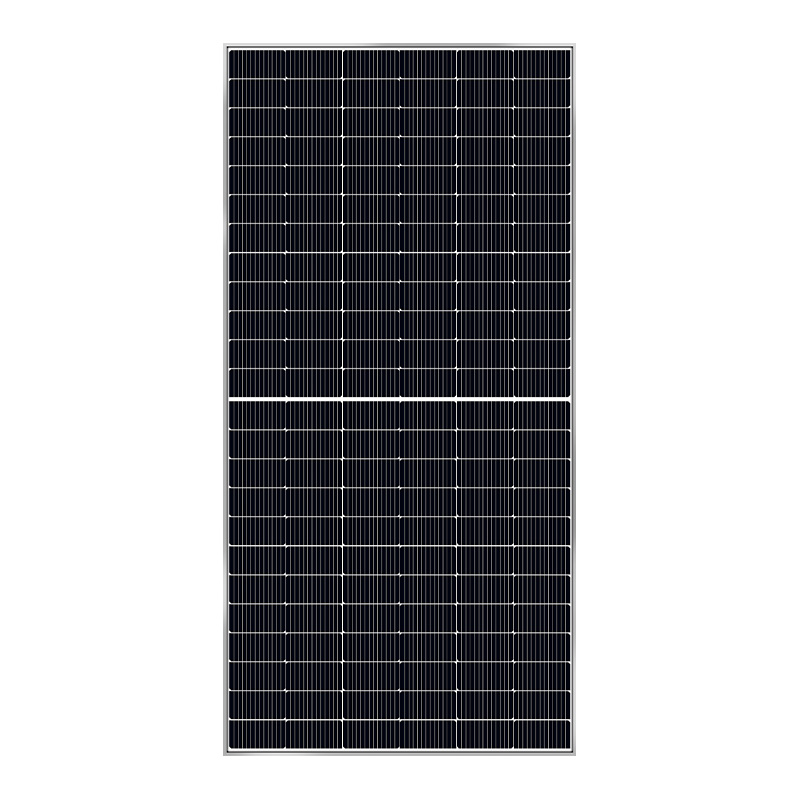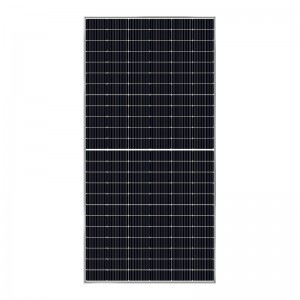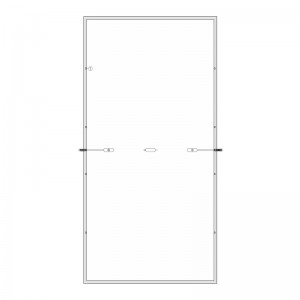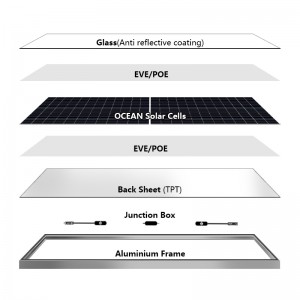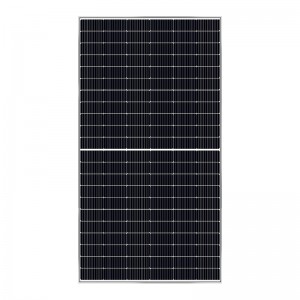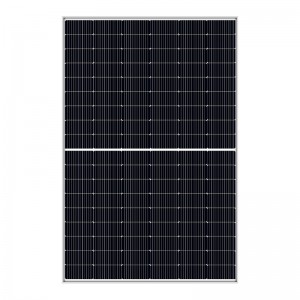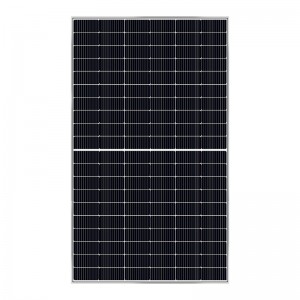M6 MBB PERC 144 half cells 450W-480W solar module
Ultra-high Power Generation/Ultra-high Efficiency
Enhanced Reliability
Lower LID / LETID
High Compatibility
Optimized Temperature Coefficient
Lower Operating Temperature
Optimized Degradation
Outstanding Low Light Performance
Exceptional PID Resistance
| Cell | Mono 166*83mm |
| No. of cells | 144(6×24) |
| Rated Maximum Power(Pmax) | 450W-480W |
| Maximum Efficiency | 20.7%-22.1% |
| Junction Box | IP68,3 diodes |
| Maximum System Voltage | 1000V/1500V DC |
| Operating Temperature | -40℃~+85℃ |
| Connectors | MC4 |
| Dimension | 2094*1038*35mm |
| No.of one 20GP container | 280PCS |
| No.of one 40HQ container | 726PCS |
12-year warranty for materials and processing;
30-year warranty for extra linear power output.

* Advanced automated production lines and first-class brand raw material suppliers ensure that solar panels are more reliable.
* All series of solar panels have passed TUV, CE, CQC, ISO,UNI9177- Fire Class 1 quality certification.
* Advanced Half-cells, MBB and PERC solar cell technology, higher solar panel efficiency and economic benefits.
* Grade A quality, more favorable price, 30 years longer service life.
Widely used in residential PV system, commercial & industrial PV system, utility-scale PV system, solar energy storage system, solar water pump, home solar system, solar monitoring, solar street lights, etc.
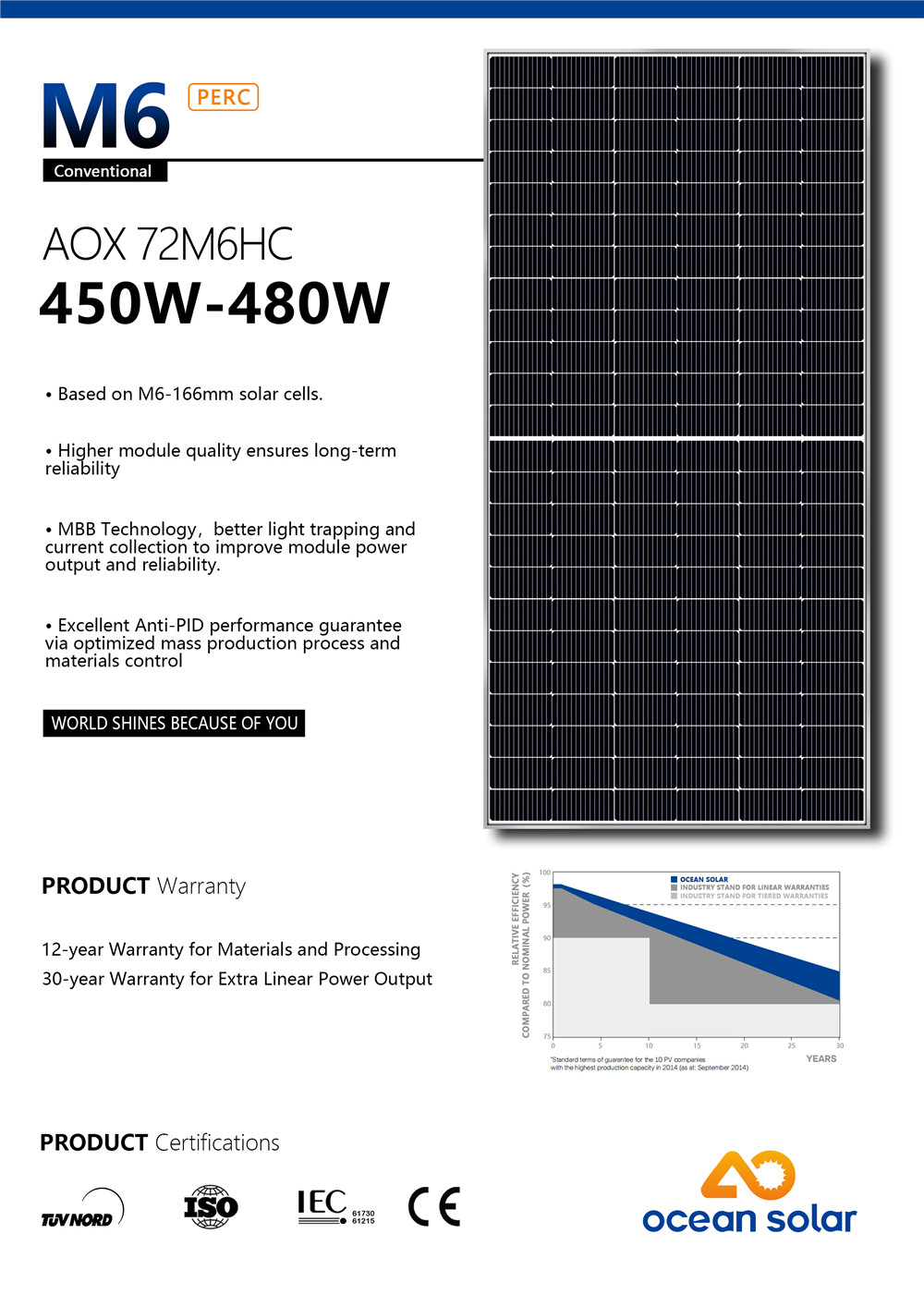
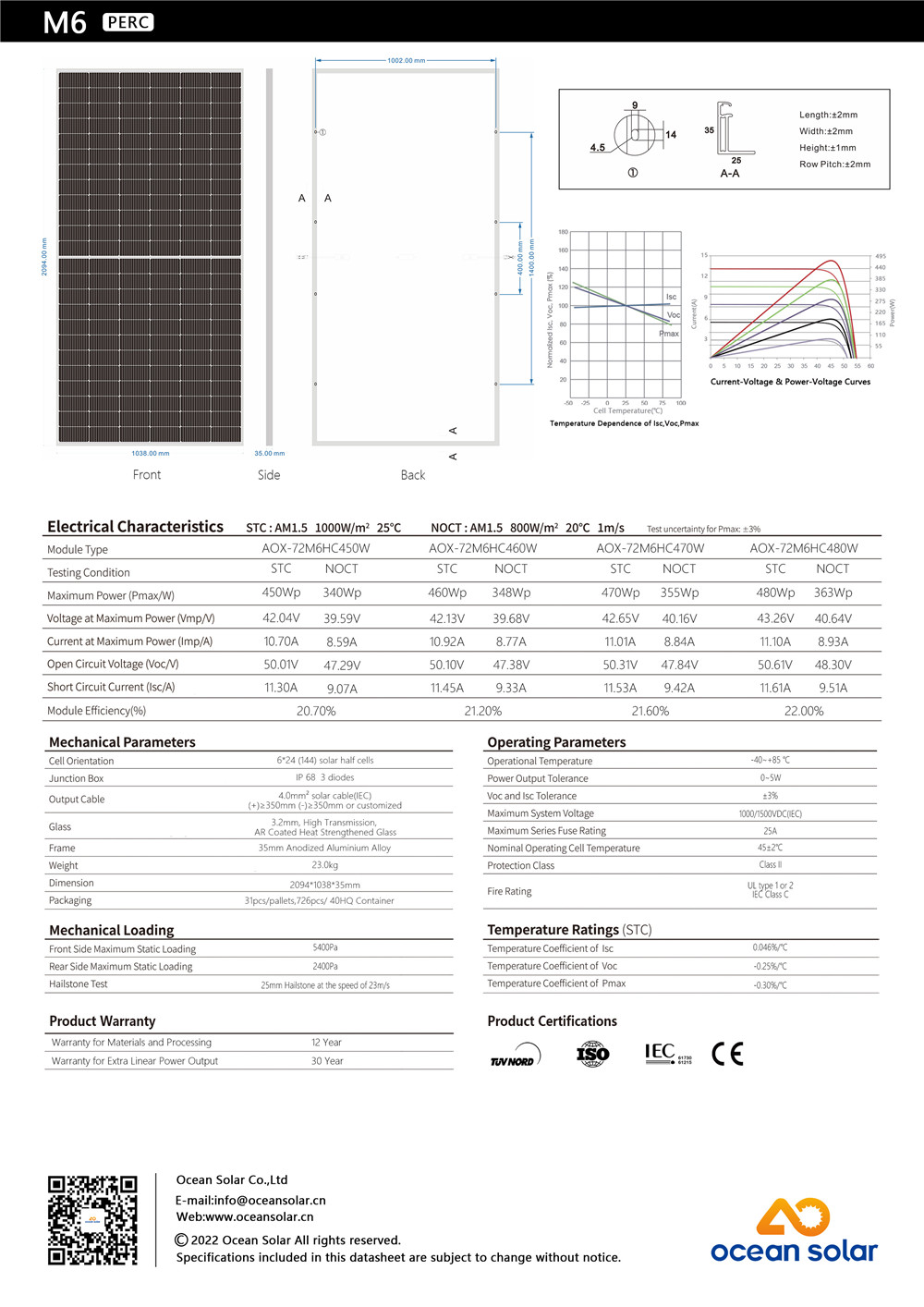
MBB or multiple busbar half-cell modules represent a new approach to solar panel design that can significantly increase their efficiency and performance. The traditional approach to solar panel design involves using standard busbars -- thin strips of metal that collect the electricity generated by solar cells. However, this design has some limitations in terms of efficiency and power output. MBB half-cell modules, on the other hand, use a lot of smaller busbars for a more efficient and effective design.
The MBB half-cell module design involves using a solar cell that is cut in half, creating two independent cells connected in parallel. These cells are then equipped with a large number of smaller busbars—typically 5 to 10 per cell—that are spaced closer together than traditional busbars. This design enables MBB half-cell modules to offer several key advantages over conventional solar panel designs:
1. Increased efficiency: The efficiency of MBB half-cell modules is significantly higher than that of traditional solar panels. This is because multiple bus bars reduce the resistance in the battery, allowing for faster and more efficient current flow. Smaller bus bars also reduce the amount of shading that can occur on the cells, further improving efficiency and overall power output.
2. Improve durability: The use of multi-busbar also improves the durability of the multi-busbar half-cell module. Smaller, more closely spaced busbars are less likely to suffer from the cracking and damage that can occur with larger conventional busbars. This means that MBB half-cell modules are less likely to fail or require maintenance over time.
3. Increased power output: Thanks to higher efficiency and improved design, MBB half-cell modules generate more power than traditional solar panels. This means they are able to generate more electricity from the same amount of sunlight, making them an attractive option for commercial and residential solar applications.
4. Reduced hot spots: Compared to traditional solar panels, MBB half-cell modules are less likely to form hot spots (localized areas of high heat). This is because the smaller bus bars reduce the heat generated by the battery as it conducts electricity. This in turn helps to increase the durability and lifetime of the MBB half-cell modules.
Overall, MBB half-cell modules represent a major advance in solar panel technology. Their higher efficiency, greater durability and higher power output make them an attractive option for those looking to invest in solar energy. As the technology continues to develop and become more widely adopted, we are likely to see more and more MBB half-cell modules used in homes, businesses and other environments around the world.

